In today’s A Lab Aloft, International Space Station Chief Scientist Julie Robinson, Ph.D. speaks with NASA experts in microgravity research disciplines. Together they take the opportunity of the 15 year anniversary of the station to reflect on accomplishments and discuss what’s next aboard the orbiting laboratory.
It’s hard to believe that the International Space Station has already celebrated 15 years in orbit with the anniversary of the first module, Zarya. That decade and a half included nail-biting spacewalks, and an assembly of parts designed and built around the world that was a miraculous engineering and international achievement. Our research ramped up after assembly was completed in 2011, and we are nowhere near done. In fact, with NASA Administrator Charlie Bolden’s recent announcement that the space station will continue operations till 2024, this is a time of opportunity. With full utilization already at hand, an ever-growing research community is enthusiastic about what’s next in discoveries and benefits for humanity.
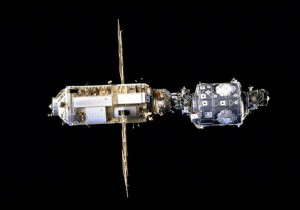
I want to share with you the thoughts from some of my colleagues who have worked to enable these key achievements leading up to this milestone year for the various space station disciplines. I also asked them to share what they look forward to as we continue. With space station planned for the next decade and likely beyond, this is no time to rest, but to ramp up and make full use of this amazing laboratory.
The most important development on the space station is the emergence of a public-private partnership enabled by congress in designating the station as a National Laboratory. Managed by the Center for the Advancement of Science in Space (CASIS), this National Laboratory provides funding avenues for universal access for users, in addition to NASA-funded research. “Through the creation of CASIS, our organization is able to leverage partnerships with commercial companies, other government agencies and academic institutions to generate a variety of research capable of benefitting life on Earth,” said Gregory H. Johnson, President and Chief Executive Officer of CASIS. “The foundation of NASA-funded research discoveries on the space station helps us work with new users interested in applied research. Each year this user base is expanding due to the past success and the future promise of life sciences, materials science and Earth remote sensing.”
From a technology perspective, the design and assembly of the space station is a major international collaborative achievement in and of itself. Beyond this, the station is a unique technology test bed for everything from remote Earth sensing instruments to life support for distant destinations, such as an asteroid or Mars. As NASA’s International Space Station Technology Demonstration Manager George Nelson noted, “In these first 15 years of the space station we have managed to launch, activate, and use the state-of-the-art spaceflight systems that enable long-duration human missions. We continue to evaluate their performance and, using what we learn, we are taking steps to mature those systems in ways that better allow us to explore our solar system.”
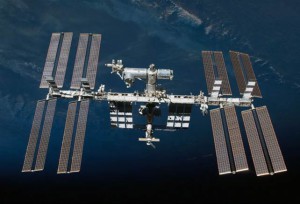
When it comes to remote Earth sensing, the space station is not only a test bed, but an orbital platform capable of providing a constant watch on our planet, as well as our universe. William Stefanov, Ph.D., senior remote sensing specialist with NASA’s International Space Station Program Science Office, provides an overview of the station’s orbital perspective on our planet.
“During the past 15 years, the space station has become recognized as a valid and useful platform for Earth remote sensing,” said Stefanov. “Handheld camera imagery collected by astronauts from the earliest days of the station have demonstrated its usefulness as both a compliment to more traditional free-flyer sensor systems and as a vantage point in its own right, providing unique opportunities to collect both day and night imagery of the Earth system due to its inclined equatorial orbit.”
Major new instruments will be arriving during the coming years, including ISS RapidSCAT and the Cloud-Aerosol Transport System (CATS) in 2014. Looking to the future, Stefanov touched on anticipated benefits, such as those already realized by the use of the Hyperspectral Imager for the Coastal Oceans (HICO) instrument. Data from HICO is accessible to the public through the OceanColor website maintained at Goddard Space Flight Center. HICO also is now available for new data collection requests through a proposal submission process.
“The space station is now viewed by NASA and its international partners as an attractive platform to test and deploy advanced multispectral and hyperspectral passive sensor systems for land, oceanic/coastal, and atmospheric remote sensing,” said Stefanov. “We also can support humanitarian efforts related to disaster response through collection of remotely sensed information for disaster-stricken areas. The capacity to host active sensor systems, such as lidar, is also being explored. The space station is well on its way to expand its role as a test bed and become an integral part of the NASA fleet of Earth remote sensing satellites.”
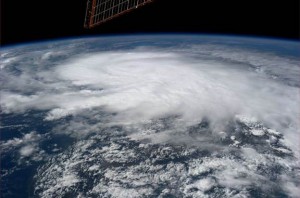
While the various sensors aboard station take quite a bit of physics into account, it’s important to note that there’s plenty of physics going on inside, too. The space station also is a laboratory for fundamental physics microgravity research. I spoke with International Space Station Fundamental Physics Senior Program Executive Mark Lee, Ph.D., about station contributions in this discipline.
“In the past 15 years I think we have done a couple of really important investigations on the space shuttle before the space station came into use,” said Lee. “Specifically the Lambda Point Experiment (LPE) and the Confined Helium Experiment (CHEX) investigations. These two look at the quantum effect in a very low temperature also coupled with the dimensionality in a bulk three dimension, versus a confined limit to a two dimensional space, to see how the quantum physics behaved. These studies were provided by Mother Nature of which we cannot change, but from now on we can design our own quantum systems.”
According to Lee, quantum physics is mysterious and still barley understood, making future investigations fertile grounds for progress. “Though humanity has known of quantum physics for just a about 100 years, before the 1990s, however, we had to rely on nature to provide us with a quantum system. For instance, superconductivity, superfluid in liquid helium, even a neutron star and a black hole are gigantic star quantum systems. In the next decade on the space station we are developing the Cold Atom Laboratory (CAL) as a ‘designer’s quantum system’ apparatus.”
A multi-user facility, CAL’s design will enable the study of ultra-cold quantum gases in microgravity from aboard the space station. The primary goal is to explore extremely low temperatures, previously inaccessible, for quantum phenomena.
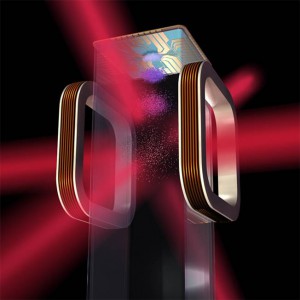
Lee continued, “The ability to study Bose Einstein condensates (BEC) and extremely cold atoms in space is a totally new dimension. With the kind of manipulation we will have in CAL, we can create different atom interactions and novel quantum configurations in such a way by manipulating individual atoms to look deeply into the quantum effect. Even Einstein’s Equivalence Principle (EEP) can be tested in space for the first time using this quantum system vs. that of previous classical ones. This is a very exciting area. This excitement, of course, is reflected in the Nobel Prize awards for related areas of study in 1997, 2001 and 2005. I can’t wait to see what happens when researchers can superbly cool and control a quantum system on the space station.”
Another exciting area of study in microgravity is that of physical science. Natural elements such as fluids and fire react quite differently and are some particularly interesting and useful areas of study in this environment. Program Executive for Physical Sciences, International Space Station Research Project Fran Chiaramonte, Ph.D., also weighed in on where we’ve been and where we are going.
When asked about the discipline of physical science in microgravity thus far, Chiaramonte responded, “I think the top achievement was the cool flames discovery. This was made when flames were detected at a temperature significantly below the known ignition temperature for the liquid droplet fuels we were studying in space. This came out of what we call the Flame Extinguishment Experiment (FLEX) where we were looking at droplet combustion in the Combustion Integrated Rack (CIR). The finding was unexpected from that research. Follow-on investigations will continue the quest to understand these flames and better define their characteristics. This has applications in the automotive industry—the findings would hand off via research publications and would be of value to them.”
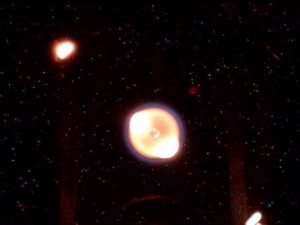
Chiaramonte cited that in looking to the future, it is the early space station investigations that provide the basis for what’s next. Especially when talking about fluid physics. “In complex fluids, it started with a series of very simple experiments on phase separation between a host liquid and polymer particles. In a weightless environment, these particles will remain suspended in the solution almost indefinitely. On Earth they would settle to the bottom of the container and the experiment would be over before any meaningful science could be done. Over time the particles clumped together and separated out of the solution.”
“These precursor experiments led up to the next series of tests, called the Advanced Colloids Experiment (ACE) series,” continued Chiaramonte. “Now scientists study similar types of solutions under a microscope with a range of magnification and we are looking for a more strategic outcome. For instance, Paul Chaikin, Ph.D., is studying the self-assembly of particles, which has been a plaguing challenge for the future of advanced optical materials. In that work, they have successfully arranged one-dimensional line of particles, and have now successfully arranged a two-dimensional line of particles. This has important industrial applications.”
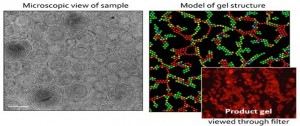
“It will take many researchers beyond Chaikin’s work,” said Chiaramonte, “but by using the space station for that kind of study, we can anticipate a major contribution in this area of three-dimensional ordering of particles and optical computing.”
From questions looking at the microscopic scale of physical phenomena, we now move on to the important minutia within our own bodies with the study of life sciences in microgravity. In speaking with Space Biosciences Division Chief Sid Sun, the research that stands out to him from the space station’s tenure involves the importance of where we’re heading next.
“In life sciences what we’ve been able to do over the last 15 years is answer at a first level the various questions that are associated with life in space,” said Sun. “Essentially how the unique environment of space, such as the microgravity and different radiation levels affect living organisms. As is typical with science, every time you answer one question, a whole other set of questions pop up, so that’s where the future of the research will take us. In particular, we’ll be studying more of the changes in the genomics of living systems.”
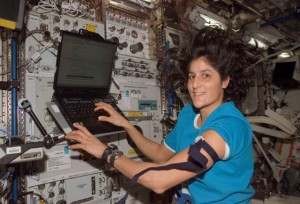
“Something that the advances in biotechnology are allowing us to do now is better understand what is happening in the basic genetic code within organisms and how that code is being expressed or not expressed in space compared to Earth,” Sun continued. “The space station allows studies of record length for a wide variety of organisms. On the space shuttle scientists were limited to from 10 to 14 days every five years. Now with the continued orbit of the space station we are able to do experiments in microgravity for months, maybe heading into half a year to a year in length, and we continuously have scientists study a wide variety of organisms. That is going to be especially critical as we look to study humans in space for multiyear missions.”
These findings flow to future areas of study, where model animals will play an important role. “Being able to study other organisms, especially rodents, will shed a lot of insights into how spaceflight will be affecting people for long periods of time. In particular, during space station assembly, pharma demonstrated that space biomedical research could enable both drug discovery on Earth and biomedical research important for astronauts. With the new Rodent Research Facility we’re developing for the space station we’re going to take that research to the next level, again taking that research into longer experiments and having more animals up there. It will be high speed compared to the experiments of the past.”
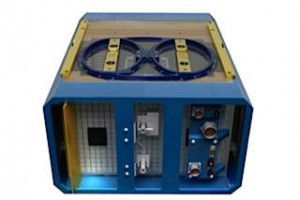
While model animal studies are key to human health developments, our crew also serves as test subjects for a variety of important investigations. From the beginning, our astronauts collected samples, kept journals and participated in experiments to help increase the understanding of what life in space meant for the human body.
“The first 15 years of the space station provided us with a much deeper understanding of how humans respond to six months of space flight and how to deal with those changes,” said Craig Kundrot, Deputy Chief Scientist, Human Research Program. “We have learned how to prevent or limit problems like bone loss, muscle loss, or aerobic fitness. We have discovered new changes that were not as clear in the one to two week long shuttle missions: changes in the immune system and visual impairment, for example. We have pushed technology to new limits, like the use of ultrasound for the detection of bone fractures and kidney stones.”
“In the ensuing years, we seek to overcome the remaining challenges like visual impairment,” Kundrot continued. “We also plan to progress from overcoming the challenges one at a time to overcoming the challenges with an integrated suite of countermeasures and technologies that keep the astronauts healthy and productive in future exploration missions.” These findings and the development of countermeasures and treatments are not limited to space explores, but have real world applications. From strengthening bones for those suffering from osteoporosis to boosting the immune systems of the elderly and immunosuppressed, there is much to gain from human research in microgravity.
With so much to be proud of in our 15 years of assembly and operations, it’s not surprising we have plenty to look forward to. From my perspective, I am particularly excited to see what space station researchers will discover next. Now is the time for microgravity studies to come into their own. While these future endeavors are fascinating, I am especially touched by the ways such findings return for expanded use on the ground. Whether addressing health concerns, advancing engineering designs, or inspiring the next generation, the space station may have already secured its place in history, but we are far from mission end. If anything, we have only just begun!

Julie A. Robinson, Ph.D.
International Space Station Chief Scientist
Julie A. Robinson, Ph.D., is NASA’s International Space Station Chief Scientist, representing all space station research and scientific disciplines. Robinson provides recommendations regarding research on the space station to NASA Headquarters. Her background is interdisciplinary in the physical and biological sciences. Robinson’s professional experience includes research activities in a variety of fields, such as virology, analytical chemistry, genetics, statistics, field biology, and remote sensing. She has authored more than 50 scientific publications and earned a Bachelor of Science in Chemistry and a Bachelor of Science in Biology from Utah State University, as well as a Doctor of Philosophy in Ecology, Evolution and Conservation Biology from the University of Nevada Reno.

Why all is Quantum
Gen Cromosom
Echo repeats the key
the entrance = the exit